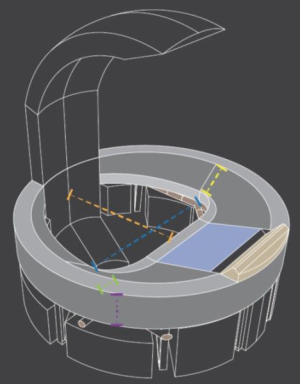Brett Montoya and Canaan Martin, both space architecture graduate students from UH Cullen College of Engineering, won the Genesis Engineering Solutions (GES) Superior Design Award for their interior operational systems and layout design of a single-person spacecraft (SPS.)
GES, an aerospace and technology company, sponsored the three-month national competition to encourage and integrate student creativity in the development of their SPS technology.
Students from an array of disciplines, including engineering, industrial design, human factors and space architecture, were challenged with developing creative internal designs for GES’s SPS that included both functional elements, such as displays and controls, and “creature comforts” using only existing technologies.
A panel of esteemed judges, which included a former NASA astronaut and leaders in engineering and design from GSE, reviewed the design entries.
The judges awarded Montoya and Martin the superior design prize for their unique solution to the design challenges. Joe Fittipaldi, one of NASA’s human factors experts who served as a competition judge, said he was particularly impressed by the attention Montoya and Martin paid to the human factors of their design.
“[They] paid careful attention to [ensure] a common viewpoint across the anthropometric scale,” said Fittipaldi.
Though the competition focused on the interior layout and components of the SPS, Montoya said he had to consider the spacecraft holistically, as the sum of its parts, to successfully design the interior.
“In order to map the layout, I had to understand the control requirements for each system,” he said. “As a result, my understanding of spacecraft systems [grew] immensely. I have Genesis Engineering to thank for that."
Montoya and Martin each took home $1,500 as recipients of the superior design prize. A team from Florida Institute of Technology took home the $2,500 Grand Prize.
GES is based in Landham, Maryland. Since it was founded in 1993, GES has supported various NASA projects, including the Hubble Servicing Missions and the James Webb Space Telescope.
The UH Sasakawa International Center for Space Architecture (SICSA) offers the world’s only master’s degree in space architecture and provides students with an advanced interdisciplinary research, design and teaching center.
